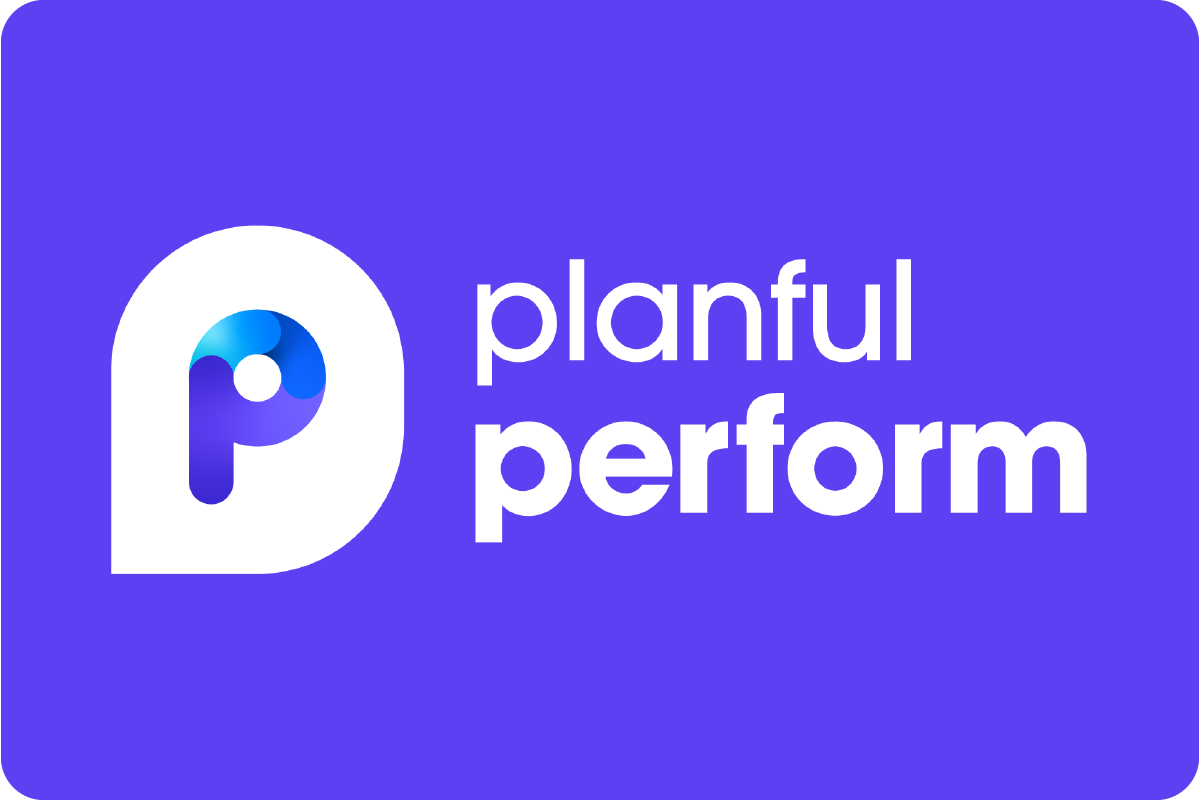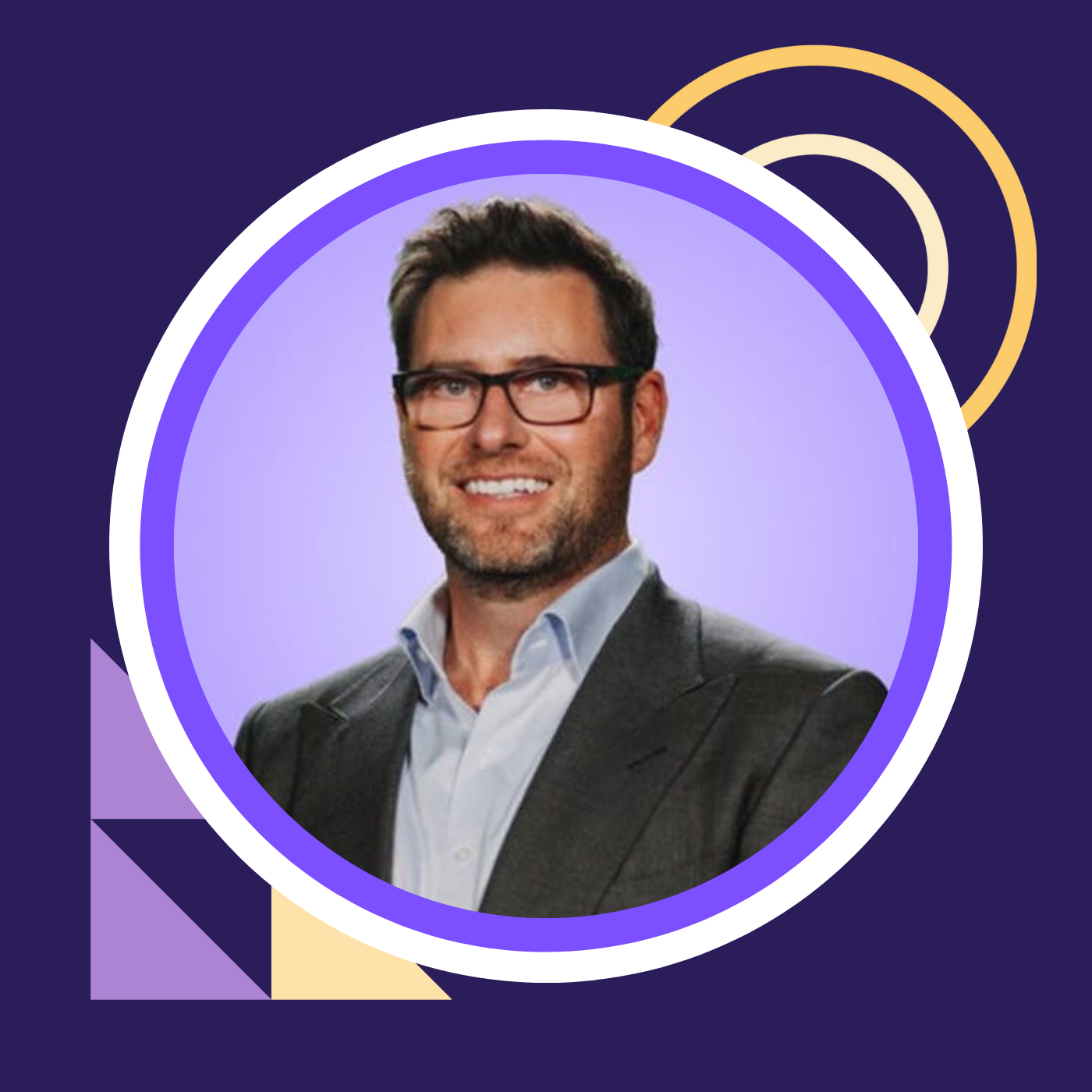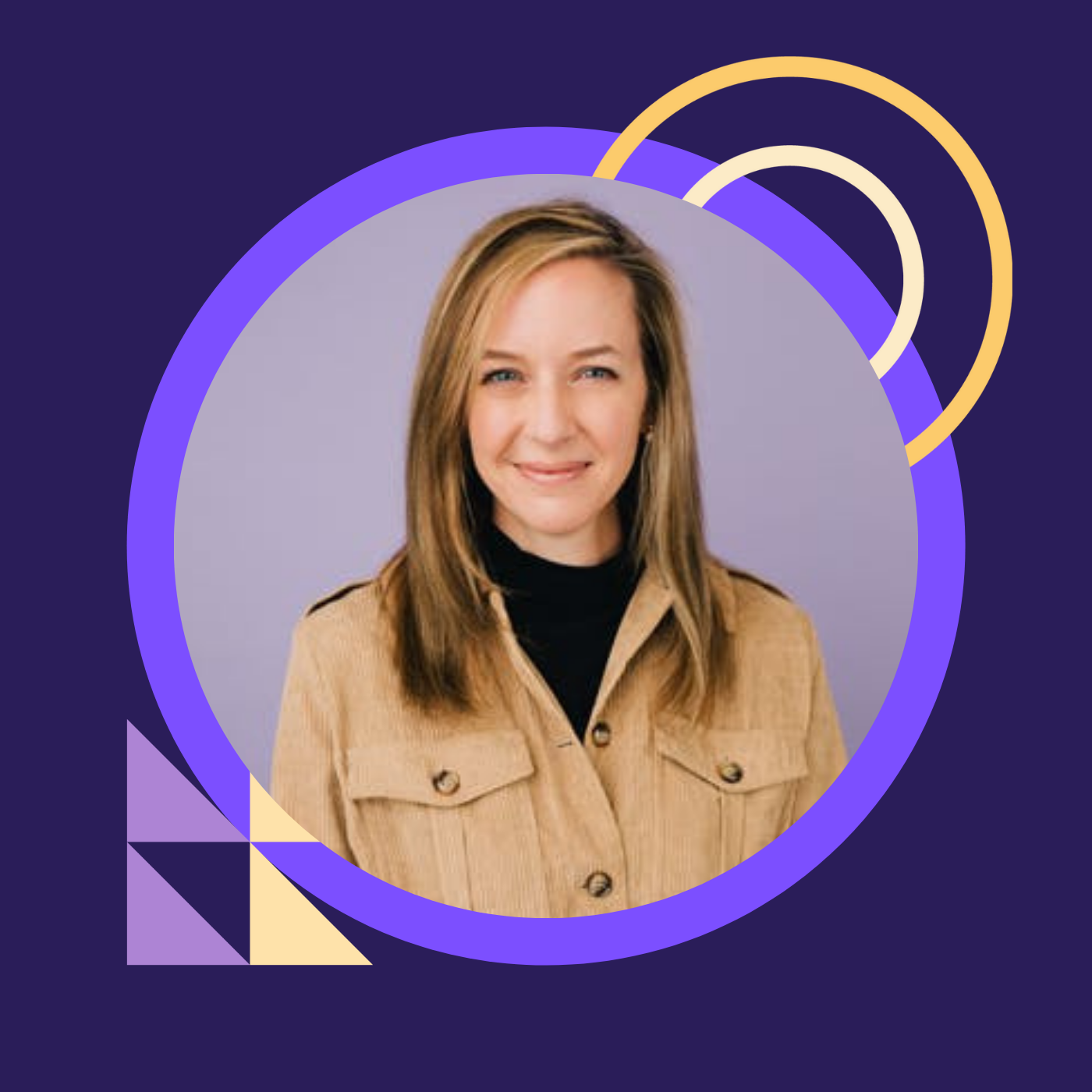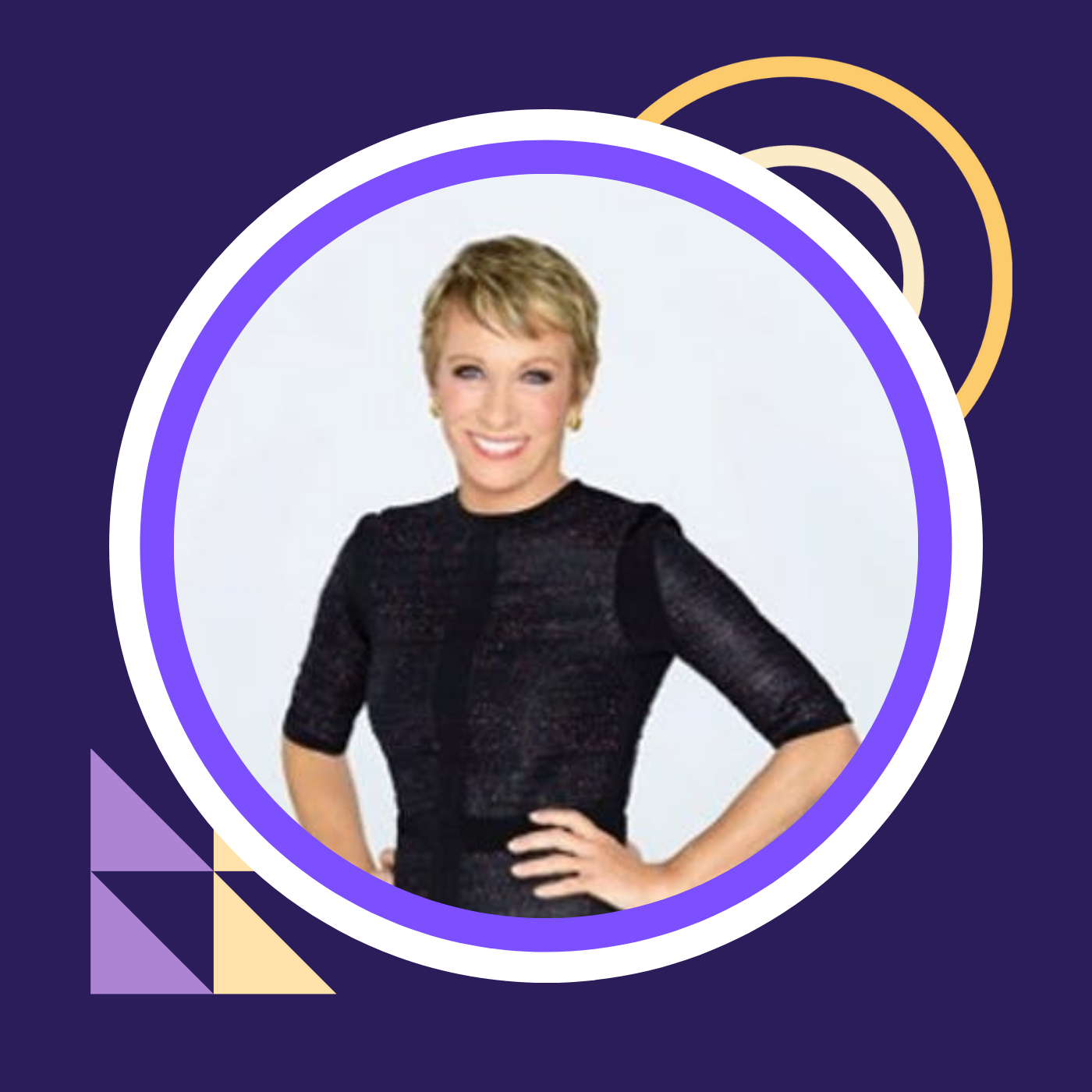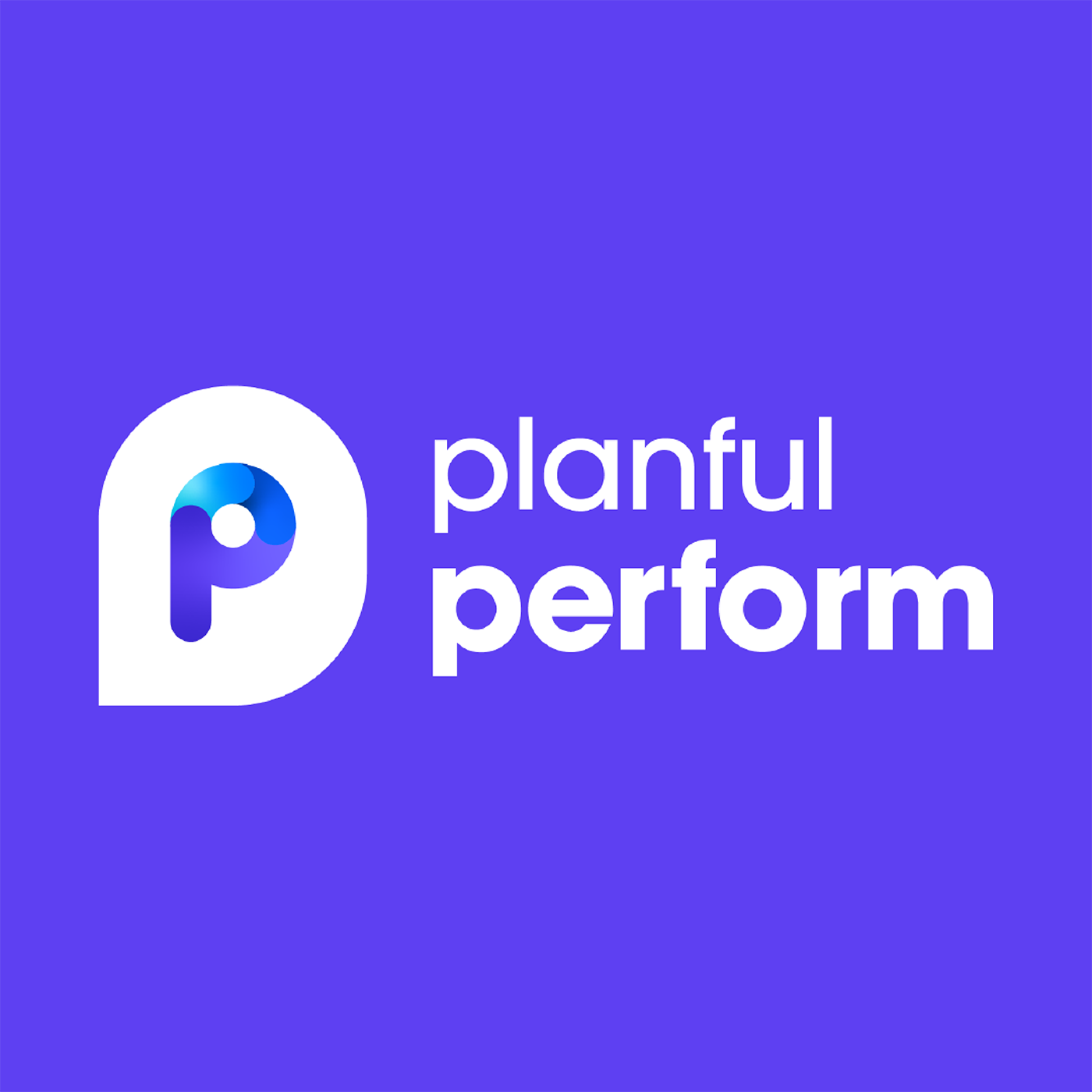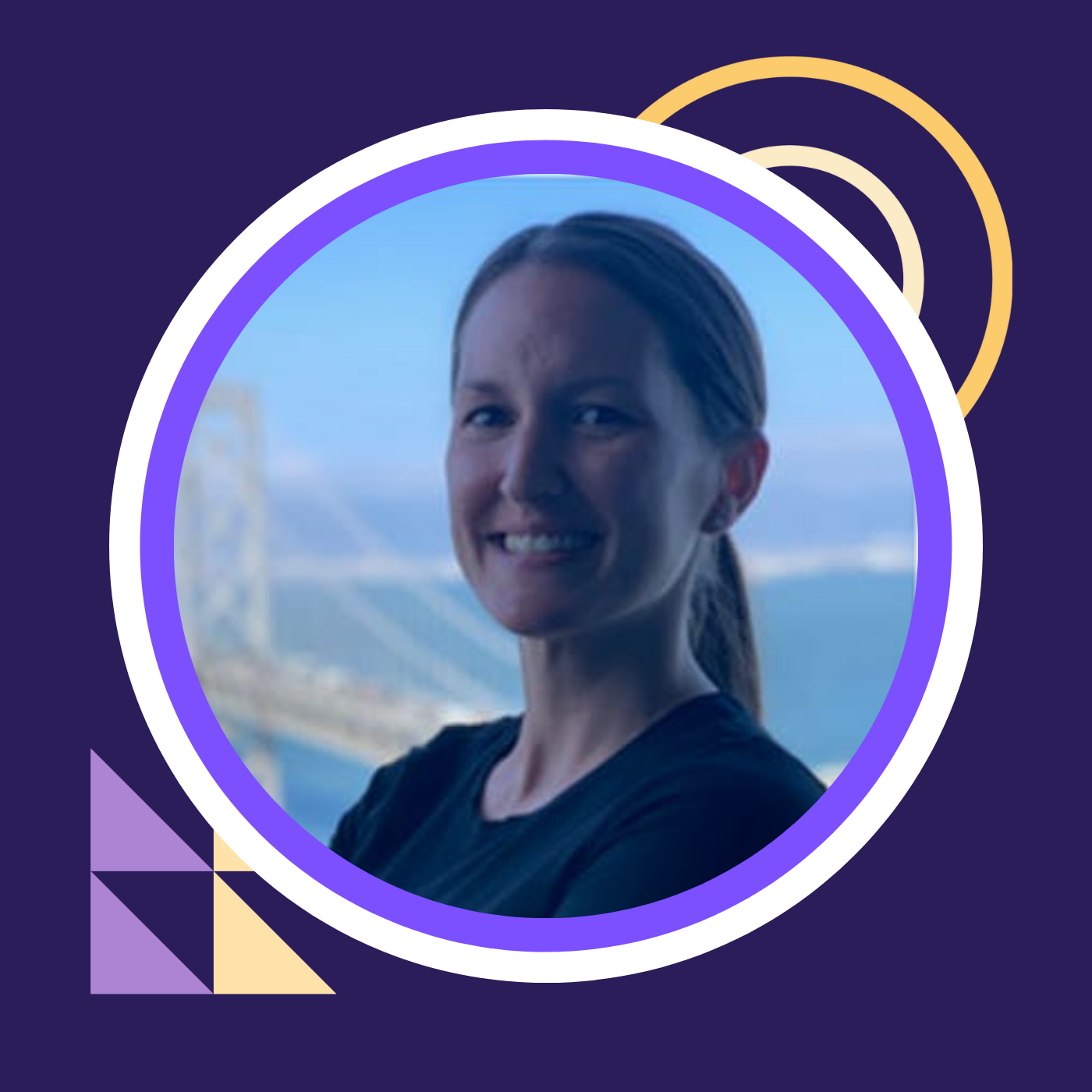FIGS: Journey From Business Partnership to Actionable Operational Outcomes | Grant Brooks
- 0.5
- 1
- 1.25
- 1.5
- 1.75
- 2
Grant Brooks: So, a little bit about me. In this session, we're going to go over a process that we've developed, and there's going to be a few things that you're going to see on the screen, but I'm not going to have any of the formulas up there or anything like that. I just want to put it out there right now, if that's something that you're interested in, if that's something that you want to adapt and have for yourself, by all means, connect with me on LinkedIn or email me. I'm pretty accessible, love to chat and provide those things. None of it's life changing or anything like that, but it can be tough if you're figuring it out on your own, like we did. So, a little bit about me. I got my start in aerospace on the military side. I actually used to sell a military- grade aircraft in the Middle East for black ops programs, so it's a little bit different than some of my other roles. It wasn't something that I was super passionate about, so I decided to leave that organization, leave Boeing, and get a job at Disney, which I was very passionate about. My team knows that I am a humongous Star Wars fan, so end of this week is Kenobi for all you Star Wars fans. Yeah, exactly. That's right, that's right. When I was at Disney, I had an amazing experience, because the very first film that I got to debut was The Force Awakens. It was the start of a journey that I could have never dreamed of, but I focused on the studio business for a couple of years in the corporate group, then I went into television, then I did consumer products. The reason why I was moved around so much is I hated inefficiency, and a lot of these business models, they hadn't been touched in such a long time, and so I would go from segment to segment and tighten up the business model and make it hum. Through all those experiences, all of a sudden I got called into a meeting where they told me," Hey, we're going to buy Fox, and we're also going to reimagine the company," and that was really exciting to me. For those of you that don't know, the Star Wars films, Fox owned those, and so now, all of a sudden, I was like," Oh man, I can have everything now." But what was really great is they also let me know," Hey, we're going to also have you create this direct- to- consumer segment. It's going to be very tech forward. We're going to have all the best tools," which was a lie," We're going to have the latest tech," that was also a lie, but it was really cool and it was really exciting. Brought the Fox assets in, and then after about a year and a half, there was a little bit of a bake- off between movies, streaming, and TV, and streaming finance won, and so I started doing all three segments. So, I was rolling up$ 50 billion of revenue in Excel, because I didn't have Planful, I didn't have an amazing system that I could trust. We had a different system, I won't mention it, and it's the bane of my existence. So, I did that for a bit, and then I felt the need to expand my horizons yet again, and I came to FIGS about almost a year ago now, it's hard to believe. Before I get into FIGS, where I lead corporate finance, how many of you are familiar with FIGS, is anyone? I know at least three people here are familiar with FIGS. Okay. How do you know FIGS? Just call it out, anyone.
Speaker 2: Scrubs.
Grant Brooks: Scrubs. You wear scrubs or someone you love wear scrubs?
Speaker 2: I know medical professionals.
Grant Brooks: You know medical professionals. How about someone else on this side? No one knows FIGS on this side? Okay. Yeah? How do you know FIGS? inaudible. Okay. Well, yes, that's right, that's right. Anyone else? All right.
Speaker 3: When I go to dentist, they wear FIGS.
Grant Brooks: They wear FIGS. Yes. So, the thing of it is with FIGS, it's kind of like if you know, you know. FIGS is a direct- to- consumer healthcare apparel company, but we're also a lifestyle brand. So, not only do we make scrubs that are very advanced in terms of the fabrics that we use, they're moisture- wicking, they have all those amazing properties, but we also have things like yoga pants. Actually, my analyst and I were looking at the new line that we just debuted yesterday called FIGS PRO, you can get slacks that are amazing. They feel great, you look great in them. They came out yesterday, that's why I'm not wearing them today. What was really great about FIGS is that they have a singular mission, which is to support healthcare professionals, or what we call them, awesome humans. The mission, it drives home so much, it's such a core to who we are, that we do things like Threads for Threads, where we donate a lot of scrubs to organizations overseas, and we support a hospital overseas where we are currently building an operating room, but we're all about the mission. So, a little bit about what we're going to talk about today is how do we align short- term department actions with long- term financial goals? How many of you are involved in something that looks or feels like that? Only a couple of you, okay. But what are some of the struggles or what are some of the frustrations that you can feel from time to time? Maybe we can get some mic help, Cody. I know it's early, but what are some of the frustrations that maybe some of you have felt? Anybody? Nobody? Oh, here we go.
Speaker 4: Long- term goals aren't important to them.
Grant Brooks: Long- term goals are not important to them. Yeah. Anyone else?
Speaker 5: Operational people aren't usually involved in strategic planning.
Grant Brooks: Love that, that's a great answer. Absolutely. Anyone else?
Speaker 6: Different parts of the supply chain, so just the fabricators are not talking to the erectors in the field. So, people are just concerned with their section versus a project that has consolidated-
Grant Brooks: Yeah. People are, maybe not on purpose siloed, but they're siloed in what they care about, they're siloed in their actions and their activities, and they're not necessarily thinking about the larger picture or where they fit into the large- term strategy. It's tough for you to connect with them on," Hey, I really need you to be on budget this month, because if we aren't, some really bad things could potentially happen." We had a process at FIGS when I first came, and I think it was 16 hours every single month where we would go through this massive exercise. I was very suspicious, I kind of felt like people weren't actually looking at the analysis or even paying attention, and you'll find out later on that they weren't. We introduced a new process, saved 100- plus hours for the year, and more importantly, we increased leadership engagement and also, I would add, ownership. So, again, before we get into the solution, let's talk a little bit about the problem, so trying to connect these long- term financial goals with these short term actions. When I set out in December to try to figure out," Okay, what's going on here? These are smart individuals, why aren't they being more responsive to some of the suggestions that we've laid out?" What I discovered were three key things that I think we've hit on. The first one is certain leaders have various comfort levels with finance. I debated a long time on this first one, I almost put discomfort, but I felt that might not be fair. But the fact of the matter is that if you are working with a leader that is designing the environment, maybe they don't know everything they need to know about how to manage a budget. Maybe they know that, and maybe they don't want to outwardly communicate that to folks because they're thinking," Man, maybe I shouldn't be an executive then," or," Maybe I shouldn't be in charge of this budget." So, what happens is they just withdraw and they don't let anyone know, and they just go," Yeah, that looks good to me," and then they just keep doing whatever they're doing. That's not helpful for anyone. The second thing is, again, this current process that we were dealing with, when I first saw it, I was just like," Oh wow, that isn't that bad. You're building all that up. Okay, so you're done?" He goes," Oh no, I've got to do this 14 more times." I was just like," 14 more times?" He's like," Yeah, man. I've got to go. I'll get back to you in a few days and we'll have all these squared away, and then we'll email everyone out." I was floored, I couldn't believe that. I was like," So this is all you do for a couple of days?" And he said." And then the last thing is, is that because we had such a time- consuming process, the only way we could get it done in time is if we just did it the same for everyone. Guess what? Not everyone's needs are the same. So now, you have an audience, you have a captive audience, at times, that they're not comfortable with the data that's being presented, they don't understand it. It's being presented in a way that doesn't speak to them. You're taking a really long time to do it, and the only way you're able to get it done is if serve them, what I would call a substandard product. It's not a reflection of you, which isn't right, but it's more of a reflection of this horrible cycle that we were in, where you're just always rushing and you're providing people with data that doesn't speak to them. This is what it was. Okay. I just have to say, before you guys start getting out the magnifying glass or the people at home start trying to screenshots up, obviously, all this data has been manufactured and is not real. But this is what we used to go over with folks, this is what we would run over with them in the month of August, or a representation of what we went over in August. In December when I was interviewing different leaders about this stuff, I remember somebody said," I will never be able to read this, no matter what you do, I will just never be able to understand this at all." Quite frankly, a pivot table may speak to me, but I get it, it doesn't speak to everyone, but I don't want to short change the whole process. Every single department leader would also get a special email from this guy, Justin Jang. Right there, Justin, there's a guy looking behind him. But Justin would take a lot of time and effort to pull together this email and to call out the various vendors that are driving the variances, and that took a long time, a long time. I think when we looked at it, we were having to go through and try to track, and it was something like maybe 400 different vendors and data points that we would have to then type. It was rough, it was, it was really rough. When I was thinking about this process, and I was thinking about my time at Disney, and I was like," Okay. This is the first thing that I've got to change, and how are we going to be able to do that? We just brought in Planful, we went ahead and connected our systems together and stuff, so we have good data, we have a source of truth, but how do I now empower these leaders?" I thought about my time at Disney. Disney is a storytelling company, and that's a big thing that is in the culture, and finance itself, it really runs true. So, when you're in finance at Disney, if you show somebody a table of numbers, they'll throw you out of the room. That doesn't work, you have to tell a story, you have to have a narrative. You have to have a hero and you have to have a villain, and you have to band people together to vanquish the villain. Finance at Disney really leads that charge. The first thing that you really find out at Disney is you have to meet people where they are. How many of you have seen a Pixar movie? I'd better see every single hand at this point. Okay. Yeah, exactly. In many ways, these finance meetings are like Pixar movies. The first 10 minutes, you have someone crying, balling their eyes out because of what they see on the screen, but you have to tell a narrative around it and you have to bring them back around. So, right off the bat, I kind of knew," Hey, we need to find a way to meet people where they are, whether it's the language or the tools or how they like to view things." The second thing is you've got to simplify the story. I remember my very first leadership role, I was sitting down with the CFO and I was displaying the numbers, and he goes," Grant, you're showing me a table of 40 rows and all these... I don't even know what to focus on." I was like," Well, the whole thing's important." He goes," Grant, we've got 15 minutes together. What are we going to do here?" That's when I learned a really valuable lesson around hey, you really need to simplify the story, and that takes some time and some effort. But if you simplify the story, you can really simplify the goal, you can simplify the action plan, and that's super important. The third thing is you got to reduce your operational friction. This is number three, but it is my favorite. It is what I've been known for and what I really love. My favorite story is in the summers when I was a kid, high school, college, I used to work at Shasta Lake up in Northern California. 120 degree weather in the summers, but it was a fantastic job, got to meet a lot of cool people. We used to kind of bring all these boats in with a, with a rope, it was a pretty big rope. I remember, you're pulling these boats in for the night and it would rub against this post. The post was all jacked up from it and the rope was also not looking super great. I remember telling my lead, my manager," Hey, I don't think we should be doing that because it just doesn't feel right." He goes," We've always done it this way. I don't need some kid telling me how to pull the boats in for the night." I was like," Okay, all right, that's fine." A month later, so we're pulling the boats in at night, customers are all around us and stuff. Terry's pulling the boats in, and that rope snaps. I'm young and I have no social awareness at all, so I'm laughing, I'm laughing my butt off, and Terry just says," The boats, the boats." I look, and because I was so busy laughing at someone, I didn't realize all the boats were floating away. Terry's hurt, so he can't even help us. So, I'm having to jump on various houseboats to try to get there, and eventually, I had to swim out and get one of them. But I never forgot that, that idea of... Because Terry had been doing this for over 10 years with the same rope, it was a big rope, for 10 years. Of course, why wouldn't you just keep doing it the same way? But operational friction is something that I think kills organizations, because if you have something that you're doing every month or every week or whatever, you really need to make sure your process is clean, that it's self- checking, and that it just goes, you're not having to worry about it. And then finally, the last one, regular, consistent tag- ups. I think this is really important on providing folks a framework, a repetitive framework where you're... Back at Boeing, we call it the battle rhythm. It gets people used to things, but more importantly, it instills confidence in leaders, because now, all of a sudden, it's not a momentous occasion that you all are meeting that they've got to somehow prepare, no, it's just a tag- up, it's just a tag- up. I have dumb questions, too, and that's what I usually tell them, is I say," Hey, if it makes you feel better, I'll ask you a bunch of dumb questions first, and then you can do me a favor and you do it yourself." But having regular, consistent tag- ups is super important when it comes to creating a sound process that works. Okay. So, focusing on the first one here, meet people where they are. So, again, this old process using Excel and Gmail, we are on the Google platform. The first thing that I noticed, so I'm interviewing all these leaders back in December, and everyone's itching to go on vacation and stuff. I go," Do you use Excel?" Less than 10% of the leaders at FIGS, and of course, this is not universal for everyone, but less than 10% of the leaders at FIGS use Excel. The reason why it's still a percentage is because I also interviewed the accounting and finance leaders and the data leaders, which by the way, are the only people that use Excel at the company, and had I not interviewed them, it would've been zero. But what do people use? 100% of them use Google Sheets, which is, again, a tool, which it's not high up on my favorite tools to use, but it's what they use. It's what speaks to them, it's what they're used to, and therefore, if it's important to them and they're used to it, it's important to me, and it's what I've got to do and what we've got to do. So, we created a new process. We started with visualizing what could it look like? What could it look like? I remember telling my analyst," Hey, we've got to do this in Google Sheets. I remember him looking at me and thinking," Oh my gosh, this guy doesn't know what he's doing," because it's a finance person that wants to use Google Sheets. To be honest, I didn't really use Google Sheets. I used it a little bit in my MBA program and stuff, but I didn't really use Google Sheets at all. I didn't even really know how to do hardly anything on it, to be honest with you. So, we're futzing around with it and stuff, and we finally come up with this simplified format. Because what I realize is that," Yeah, maybe an organization has 20 expense lines, but really, there's four that really move the needle for every one of them." They're different, every department is a little bit different. You'll see this one has charitable contributions, this doesn't... Does this have a laser pointer? Yeah. This one has charitable contributions, but not all the departments have charitable contributions, they're in charge of that. So, what I said is," Hey, so we've got to simplify the format, focus on one month. We have other tabs that will show the full year if they need that. Also, is there a better way to do the analysis?" So, we set up a little pivot table right here, and then all these are SUMIF formulas that just pull in the numbers so you can just say," Hey, what's going on with charitable contributions?" Boom, you're done, easy, easy, easy. And then, of course, you got to have colored font and bold saying," Below budget," or red font, if they are above the budget. We found that engagement goes up pretty much 500% if you just do something like that, because it's just really tough for folks sometimes, if they're not used to seeing a lot of numbers. So, that's meeting people where they're at, what are some of the benefits? Again, communicating with this common tool. Right off the bat, I noticed that people felt more engaged. The best thing about Google Sheets, I will have to say, is you can force people to just put that as a favorite right on their browser. So, now all of a sudden, it's like," Well, I don't know what my budget is." It's like," Well, man, I don't know what to tell you. You got a shortcut on your browser that has your budget," and then that gets stopped, they don't say that anymore. Now, you come up with other excuses. We found that it increased the ownership because now, all of a sudden, people were like," Hey, I know how to use Google Sheets. I know what's going on." I started seeing a little bit different of an attitude, and the best part is it's always available, it's always fresh. It's always fresh, always on, that's the new thing. The other Grant, I think, even talked about that on the keynote. We're not related. All right. The second item here, simplify the story, simplify the goal. So, one of the things that you'll notice is that by simplifying this format, it really increases the visibility of the items that matter, and it decreases what I call the noise. In the world of entertainment, you're always looking for that when you're working with your advertisers, how can we increase the visibility and decrease the noise, cut through everything so that you can ultimately focus the conversation? What we found is that when we were doing these monthly meetings with folks, all of a sudden, people were more engaged, they were talking about stuff more. They were talking about how they could manage things better. I never even heard that before, no one had ever suggested that, it was just like," Yep, nope, looks good to me. Okay, we'll talk to you next month." It allows you to have these robust discussions with your department leaders. So, how did we do it? We created the format, but I didn't actually have a way of doing it. So, I had Point A and I had Point B, point A is Planful and Point B is this nice- looking format for 14 different leaders, 14 different groups. We did some Google searching and I have to say, it's not just Google searching, there's another guy in the audience here, Josh, he actually found a way to do a query where basically, you have all these different Google Sheets, you just put the query in, you put a couple of attributes, it's very easy, and it just sucks in just their department. So, all of a sudden, the only thing that we have to do is just download a flat file, paste it in, and you're done. Now, what's even more exciting is that, and Scott over here, he's our implementation partner, as well as Shanna, Shanna at UHY and i2 Advantage, I've got to give a shout out to those guys, none of this would be possible without them. But what's really great is that Planful has a way of connecting with Google Sheets now, directly. I tried to activate it, but we were in the middle of earnings and stuff, and so I didn't get a chance to test it, but if you connect with me on LinkedIn or whatever, I will find out the answer in a couple of weeks. The hope is that even that first linkage becomes automated, and then all of a sudden, now it's just down to writing COCs, or causes of change. So, what are some of the benefits? The entire update process is one minute now, and that's being conservative. Honestly, guys, you download the report, I think now we even have it automatically downloaded for us, and you get an email or something and you can do that. The individual commentary, because we have those dropdowns now, it's a snap, you just have that done in a couple minutes. The total process for everybody takes about an hour, even the emails, and that's versus 16 hours. You just can't beat it, you can't beat it. Now, we're doing things that are a little bit more value added, in my opinion. So, new process, you got this email, and the email never changes because the link never changes. The only thing you're doing is doing a screenshot of the analysis that you already put together, and you throw it in the email and you're done. So, when we're doing these regular consistent tag- ups, we're emailing them, sometimes in advance, even. But what I found is that we're training a financial mindset. Now, people are evaluating their actions in terms of dollars and cents and stuff like that, you're increasing the ownership, and what you ultimately get are more proactive leaders. So, to summarize, we had an old process that was time- consuming and low engagement. We have a new process that's 95% automated and we have engaged leaders. Ultimately, that yielded over 100 hours of time savings that we've used to create better board books, go down to EPS and plan, all sorts of great things that we've been able to use that time for. What's next? Eventually, we want to get those leaders hooked up so that they can actually put in their financial inputs. We want to empower even more leaders beyond the department heads, like the folks that are lieutenants, the people that are reporting into them. Ultimately, what I want, more accurate forecast. Who doesn't want a more accurate forecast? So, ultimately, meet people where they are, simplify the story, simplify your goal, reduce your operational friction, and have regular, consistent tag- ups. Thanks for coming to the presentation, I really appreciate it. Any questions? We can go through those now.
Speaker 7: inaudible to connecting financial goals with operational goals. So, for example, in Boeing-
Grant Brooks: Yep.
Speaker 7: ...they're a Six Sigma inaudible. There's a whole lot of metrics that go with Six Sigma that then feed into these things. Did you look at doing any of that or-
Grant Brooks: Yeah. So, one of the things which wasn't displayed here is with T&Es. This is a very powerful way to manage folks, T& E, because every group has a different T& E budget for the month. Now, it's clearly displayed, they can see that what goes into those T& E budgets, and you're able to better manage. Before, a lot of folks were," Hey, I don't know what it is, so I'm going to find out at the end of the month if I'm above or below," and by then, it's too late. But a lot of this now, now that we're having these regular tag- ups and we're actually becoming more proactive and looking into the future more. So actually, the final format of that, we're debating it right now, but we may actually just do it by quarters and show all three months and then the quarterly summation, so that as you're going through your quarter, you can actually say, Hey, you've overspent in this area. Can we go ahead and draw it down in the second month or the third month?"
Speaker 8: Hey, really interesting. So, the Google Sheets problem, we have that one, in spades.
Grant Brooks: I'm sorry.
Speaker 8: That's all right. It is what it is. But I guess my question is, is the next iteration for you to start thinking about how you would actually create input templates with the access through Google Sheets, and is that even possible?
Grant Brooks: I'm not aware of doing input through Google Sheets. I know you can do it through the Spotlight interface, through Planful and stuff. What I'm trying to do is I'm trying to get them used to going to a website, interacting with that website, and ultimately, I want to integrate it that way. Instead of saying," Hey, go to Google Sheets," I'm going to try to make it so it looks just like Google Sheets, where they can click on a bookmark, go in there, adjust their inputs, and then you're off to the races, dynamic planning and stuff like that. We're a little bit further away from that, there's some cultural things that we have to work through. Anyone else? Oh, over here.
Speaker 9: I can project, it's fine. So, I guess I do a very similar role, same thing with actual analysis and we also inaudible, as well, so very surprised to see,"Oh, it's very common things." But I guess outside of looking at it inaudible as opposed to the categories. Obviously, there might be some inaudible accounting book might be a little bit larger than normal. So, I'm just interested to hear how you would go about that process, because that's, I guess, one of the main points of the Planful/ Google stuff.
Grant Brooks: Yeah.
Speaker 9: So, for example, on my end, I'll still go through our data dump and explore and be like," What actually occurred?" And create a pivot table from there to really deep dive.
Grant Brooks: Yeah.
Speaker 9: That usually matches up with what inaudible.
Grant Brooks: I want to make sure I characterize your question correctly. Is your question for some things that may not make sense to non- financial leaders, like accruals, how do we use this process to go through that conversation?
Speaker 9: Yeah. And then, also, let's say it got admitted in, which comes in three months after the inaudible-
Grant Brooks: Oh yeah, right.
Speaker 9: ...insane.
Grant Brooks: That never happens. Yeah.
Speaker 9: And then, just making sure that you can paint that story to your call center owners overall, because that's going to add time to the process.
Grant Brooks: Yeah, yeah. Well, the great thing with Planful is that we can drill down all the way to the invoice. I don't know if that's how you have yours setup, but that has been a life- changing event for me. I was told at Disney for seven years that that was impossible and that that was a myth, that you couldn't do that. And then, it's month two at FIGS, and Scott's doing it for me and teaching me how to do it. I'm like," Oh my gosh, I knew it. I knew that my imagination wasn't that powerful." What I would say is with the accruals, a lot of folks outside of finance and accounting, they don't understand accruals, they don't really get it. Because we've created so much transparency, we've been able to actually train our leaders to understand accruals and understand how you match expenses up and stuff like that, so that's how we get through that portion. In terms of late invoicing and things like that, by creating more transparency, we're actually catching a lot of those missed invoices earlier on, because leaders are already expecting to see certain expenses come through and when they don't, they're able to contact the vendor and say," Hey, yo, what's going on?" A good example is, hate to bring this up, but COVID testing. We worked with this company, their name isn't important and I don't want to also paint a bad light on them or anything, but they didn't invoice us for six months. So, now you have four different department leaders contacting them saying," Please invoice us, please invoice us," because we're not getting any of it. It's not me, it's them, which I love. Honestly, another thing that was supposed to be part of the presentation that I forgot to mention is that because this always on mentality and it's a favorite in their browser, a lot of the questions have stopped coming to me because they can self- serve. That, to me, is amazing, because I want to make sure that people get their questions answered, but I want to make sure that it happens in a timely way where it's almost instantaneous. The problem is that I may not necessarily be available at every minute of every day. We are working in a global type of environment, if somebody's in a trip in Asia, I might be sleeping, believe it or not, now they can self- serve. Now, what I'm noticing is you're not getting these last minute," Oh my gosh, do I have budget for this?" They already know, they're empowered.
Speaker 10: How do you identify the friction point?
Grant Brooks: Oh, I love this. Oh man, he's my plant, no. Friction points, this is something that I'm really passionate around. I'm kind of insane when it comes to process. So usually, when you finish mapping out the process, I'll assign time for every portion of the process, and then I'll do an assessment, just my own, of," Really, this takes 30 minutes? That's the only way that we can do it, is if we take 30 minutes and do this, there's just no other way?" Usually, the answer is," No, there's another way," and you just keep leaning it out. My rule of thumb is if you do something every week, you need to be able to do it in less than five minutes. If you do something every month, you need to do it in less than an hour. If you do something every quarter, you need to do it in less than a couple of hours. And then, really, those are just loose guidelines, I'd prefer everything to be done in around 10 minutes. Because we're with computers and stuff now, there's no reason having to sit there and sift through all these lines of data and stuff. So, that's how I personally assess it. I'm actually going through our close process right now and it's intense. It's really intense, because now you're looking at dependencies actions and are people waiting on others? There's a lot of things that you do, but that's actually a big part of Boeing and that's where I picked that up, that skillset of analyzing a process and leaning it out and making sure that you're within Six Sigma and all that good stuff.
Speaker 11: Do you have any AI or predictive models?
Grant Brooks: I don't. I will tell you that I was encouraged by the signals and-
Speaker 2: Projections.
Grant Brooks: Thank you, projections. I'll be interested in looking into that and examining that and using that to alert me of the inconsistencies. I will also say, though, because FIGS, we just went through an IPO a year ago, we are an aggressively growing company, and so a lot of my traditional ways of finding the inconsistencies don't really work at FIGS, because you are seeing just massive jumps in terms of expenses or revenue or whatever. Yeah. Any other questions? I'm not sure how we're doing on time. I actually don't know when the session ends, so.
Speaker 9: It ends at 2:00.
Grant Brooks: Okay.
Speaker 12: So at any point, did you consider trying to move... They were familiar with Google Sheets, the leaders, but at any point, did you consider how you could leverage maybe dashboards or anything like that in Planful and change the habits, or were you-
Grant Brooks: Yeah, that's Phase 2. Yeah, that's Phase 2 now. So, now you're talking about going from a once- a- month cadence to a all- the- time cadence of looking and being aware of things. We have a few dashboards at FIGS, the most famous and most popular one is probably the sales dashboard that comes out every day. We use Looker to generate that, the team that manages that is really insightful. It definitely raises a lot of eyebrows. I think back at Disney, right before I had left, I had created something in Tableau with, we have a special team that focuses on random, special projects, like how do you evaluate the Super Bowl? Impossible tasks and questions, and it's thought leaders and stuff. We created something called the Infinity Gauntlet, because in one of the movies, Thanos says at the end," Fine, I'll do it myself." That's what I really wanted to do, is I wanted to allow my CFO and allow different finance leaders, or honestly, even strategy leaders, to say," Fine, I'll do it myself. I'll look into the numbers myself." To be able to do that for 75% of the company was something that I was told that would never, ever happen and it was impossible, and we got it done in six months. That was me working outside of my normal job, we got that done. It was a very powerful tool, and that's actually my next big project right now at FIGS. I actually just told my team, my dream is for my CFO at any point in time to open up her phone and open up an app, and review things, and see live actuals financials, all that good stuff. We're evaluating a couple of different tools, Tableau, Power BI, connections with Planful, I've also messed around a lot with the Planful dashboards. But again, how can I get these numbers in people's hands instantaneously? But I do believe dashboards are the future. I think the thing that is so great about dashboards, it's not really about the data, it's about people's perception. For whatever reason, when you say," Do you want to review something like that or do you want to review a dashboard?" They'll say they want to review a dashboard, even though the data's the exact same thing. So, again, that's meeting people where they're at. They want to feel like they're Tony Stark doing all these manipulations and stuff for their budget of$ 10, 000. You can give it to them, and then all of a sudden, you have somebody that feels like," Hey, I know what I'm doing, I'm in charge." So, we're absolutely looking at that. Here, I'll throw this one up.
Speaker 13: Inaudible separate software.
Grant Brooks: Does my accounting team load into Planful or do they use a separate software? We-
Speaker 13: Usually, yeah. inaudible.
Grant Brooks: So, interestingly enough, Shanna here... Shanna, you can wave. Actually, we use NetSuite for our actuals and Shanna has ferociously attacked and connected NetSuite and Planful, again, drilling down all the way down to the invoice level. It is literally the best thing ever. I'm a huge fan of Shanna, if you all can't tell. She's amazing, she made it happen, and that's how we do it. So, I'll use it as part of our close process, as well, to examine," Hey, I'm not seeing an invoice, or I'm not seeing this or that," and so that's actually part of our close process, as well. Oh, back there.
Speaker 5: Has there been any thought toward eliminating the budget so you can eliminate this stop part altogether and move-
Grant Brooks: Eliminating the budgets?
Speaker 5: Yeah. You're comparing actuals to a budget, which was a fiction based on a bunch of assumptions-
Grant Brooks: I love that.
Speaker 5: ...and have inaudible become out of date. So, while you're trying to catch up, it's admirable, it's better than what you're doing, but it's a complete waste of time, because once you get there, you're going to realize," I'm chasing a false reality," so you got-
Grant Brooks: I agree with that. So, one of the things, and I love that. We coordinated this beforehand, no. The old process, it was exactly budget versus actuals. I still call it the BVA because branding is important, branding is a big thing, and if you change the name on something, people freak out and think," Oh my gosh, now I'm having to do something completely different." So, actually what we do is we have a live forecast process, and actually what they're comparing against is the last forecast that we just did. Because you're right, guess what? In the world of COVID and the world of crazy military things going abroad and all sorts of stuff, a budget that we develop back in November, guess what? Probably not super accurate right now. So, we absolutely do that. Actually, what's really great is before this, we used to do a comparison against the budget and the prior forecast, but it honestly was not very value added at all. It also just distracts the user from what's really important, which is," Hey, this is the current forecast that the CEO knows, this is what we need to do right now." So, does that answer your question or-
Speaker 5: inaudible. They're similar companies, LT Apparel eliminated budgets in 2018. So, while Grant talked about them doing more rapid budgeting, that's actually a misnomer, they don't budget at all. They're not trying to do it more rapidly, they've gone to a rolling forecast and replaced it. There's just so much non- value added work that we do in finance, building these fictions that are snaps in time based on a bunch of assumptions that you ferociously argue about and agree to, only to find out shortly thereafter new information makes it completely out of date.
Grant Brooks: Yeah. The consumer product segment, which is now part of parks at Disney, actually adopted a two- year rolling forecast, where they cover 24 months at any point in time. There is still a budget, but it's literally just like, I guess they would be doing it in July," Oh, it's July. We've got to do the budget snapshot. Okay, we're done." That's why it's actually 24 months, because it encompasses that year. But I agree with you. Honestly, that's something that we should probably be thinking about and looking at.
Speaker 5: Well, it shifts you to thinking about relationships. So, what the CFO really wants to know is," Is my expenses in relation to the volume we're doing? So, if volume's going up, I can spend more. If volume's going down..." So, you can replace budgets by replacing trying to capture what is the dynamic relationship that goes in that place, so that when the drivers update, the numbers automatically update up and down. But we've got real companies already moving that, which is light years... I get frustrated when I hear people catching up, we do valued efforts to get to where we should have been 10 years ago.
Grant Brooks: Yeah. Those are really excellent points. The couple of things that come to my mind that I think adopting a more rolling forecast, some things that we probably need to consider are things making sure that we still have a quote unquote budget or plan for bonus, I also lead our bonus program. Because we're a publicly traded company, there's some literature in the disclosures around how we bonus people and making sure that we hit the plan or the budget for the board. But beyond that, honestly, you're probably right, and it's something that we need to be thinking about. Thank you for that, that's great. inaudible. Absolutely. But Cody's yanking me off the stage here. I appreciate everyone for spending their time and feel free to connect with me, absolutely.
DESCRIPTION
More chefs in the proverbial kitchen tend to slow processes and add confusion. But progressive organizations have found that when people are empowered to participate, adding more people actually improves the processes. Grant Brooks, Finance Director, will explain how FIGS, a direct-to-consumer apparel and lifestyle brand for healthcare professionals, is reducing operational friction by deconstructing processes, identifying the key steps and inputs, and giving individuals more ownership over those inputs. He’ll also show how FIGS relies on Planful to reduce friction by enabling people to communicate financial information more effectively.
Today's Guests

